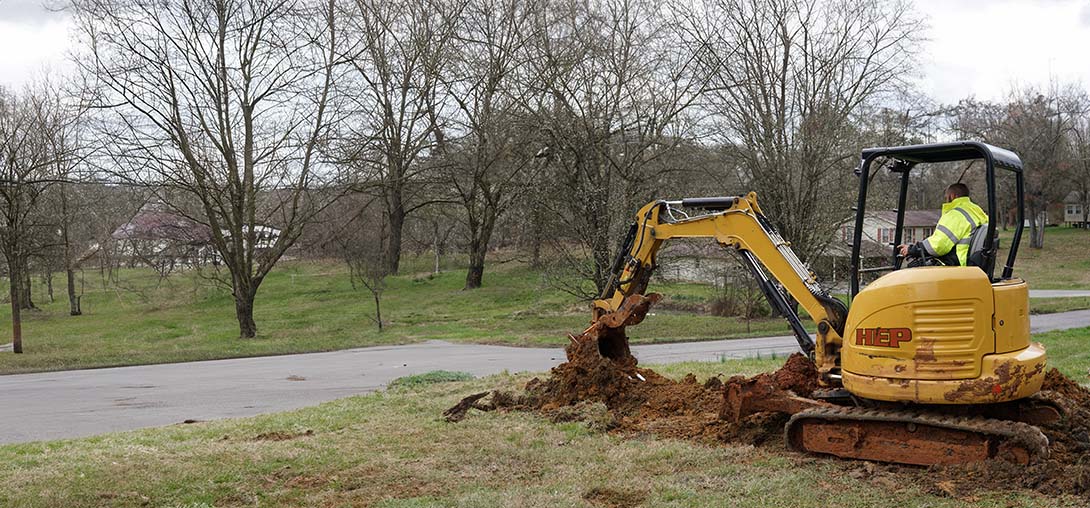- HEP
- Long-term Solutions

 Long-term Solutions
Long-term Solutions
Long-term Solutions | Main Line Issues | Plumbing | Walland
When a sudden backup or slow-draining fixture hints at deeper trouble, Walland homeowners turn to HEP for long-term solutions that reach far beyond quick fixes. Our licensed plumbers employ camera inspections, trenchless technology, and decades of local know-how to diagnose and repair main line issues at their root, restoring full flow to your property while protecting lawns, driveways, and peace of mind.
From the first call to the final pressure test, you’ll feel the HEP difference—24/7 responsiveness, up-front pricing, and workmanship backed by iron-clad guarantees. Whether you’re battling invasive roots, aging cast iron, or repeated clogs, we craft a plan that safeguards your plumbing for years to come, so you can get back to enjoying life in the Foothills without another thought about what’s happening underground.
FAQs
What are the most common warning signs that my main sewer line in Walland needs professional attention?
Slow-draining fixtures throughout the home, frequent backups in tubs or floor drains, gurgling noises when you flush, or foul odors in the yard can all indicate a main line issue. Because the main drain serves the entire house, problems usually show up in multiple fixtures at once. If you notice soggy patches or greener-than-usual grass above the line’s path, wastewater may be leaking underground. Addressing these signs early prevents costly structural damage and health hazards.
How does Long-Term Solutions Plumbing accurately diagnose main line problems?
We start with a whole-home plumbing assessment and pressure test to rule out secondary drains. Then we deploy a high-resolution sewer camera through the cleanout or roof vent to visually inspect up to 200 ft of pipe. The camera pinpoints breaks, root intrusions, bellies, and material deterioration, while an attached radio transmitter lets us mark the exact depth and location from the surface. If needed, we follow up with a static water test or smoke test to confirm leaks. This precise diagnosis means we can propose the most cost-effective long-term repair rather than guesswork digging.
What trenchless repair or replacement options do you offer, and how durable are they?
In Walland we provide two primary trenchless solutions: (1) Pipe lining (CIPP), where we insert an epoxy-saturated liner that cures in place to form a seamless, joint-free pipe inside the old one; life expectancy is 50+ years and it meets ASTM F1216 standards. (2) Pipe bursting, which splits the old pipe while simultaneously pulling in a new HDPE pipe rated for 100 years. Both methods require only small entry/exit pits, protect landscaping, and are approved by Blount County plumbing codes. We back trenchless installations with a transferable 25-year warranty.
Can tree roots really damage my main line even if my yard looks healthy?
Yes. Roots seek moisture and nutrients that seep from tiny cracks or joints in aging clay, cast iron, or Orangeburg pipes. Even a healthy yard with no surface symptoms can harbor aggressive root growth 6-10 ft underground. Over time roots expand the cracks, catch debris, and cause complete blockages or pipe collapse. Our camera inspection clearly shows root intrusions, and our hydro-jetting plus root-cutting service removes them before we seal the pipe with a liner or replacement to prevent regrowth.
What should I expect during a full main line replacement with Long-Term Solutions Plumbing?
1) Permit & utility locate: We handle Blount County permits and have 811 mark gas, water, and electric lines. 2) Access: We protect driveways, hardscape, and landscaping with plywood and tarps. 3) Excavation or trenchless pits are dug, usually one near the house and one at the street tap. 4) Old pipe removal or bursting takes 1–2 days for most 40–70 ft lines. 5) New schedule-40 PVC or HDPE line is installed with proper slope, cleanouts, and code-required bedding. 6) Inspection: County inspector verifies grade and materials before backfill. 7) Restoration: We backfill with native soil, compact, seed or straw, and haul debris. Most jobs finish in 2–3 days with water service downtime limited to a few hours.
How can I prevent future blockages or collapses once my main line is repaired?
• Schedule a preventive camera inspection every two years to catch early wear or root regrowth. • Avoid flushing wipes (even “flushable”), feminine products, grease, or fibrous food waste. • Install a backwater valve if your home sits lower than the street to stop municipal surges. • Use enzyme-based drain cleaners monthly rather than harsh chemicals that corrode pipes. • Keep large trees at least 10 ft from the sewer path or install root barriers. • If you have a sump pump or downspouts, ensure they discharge to storm drainage, not the sanitary line, to reduce hydraulic load. Following these practices extends your main line’s life and maintains our warranty coverage.